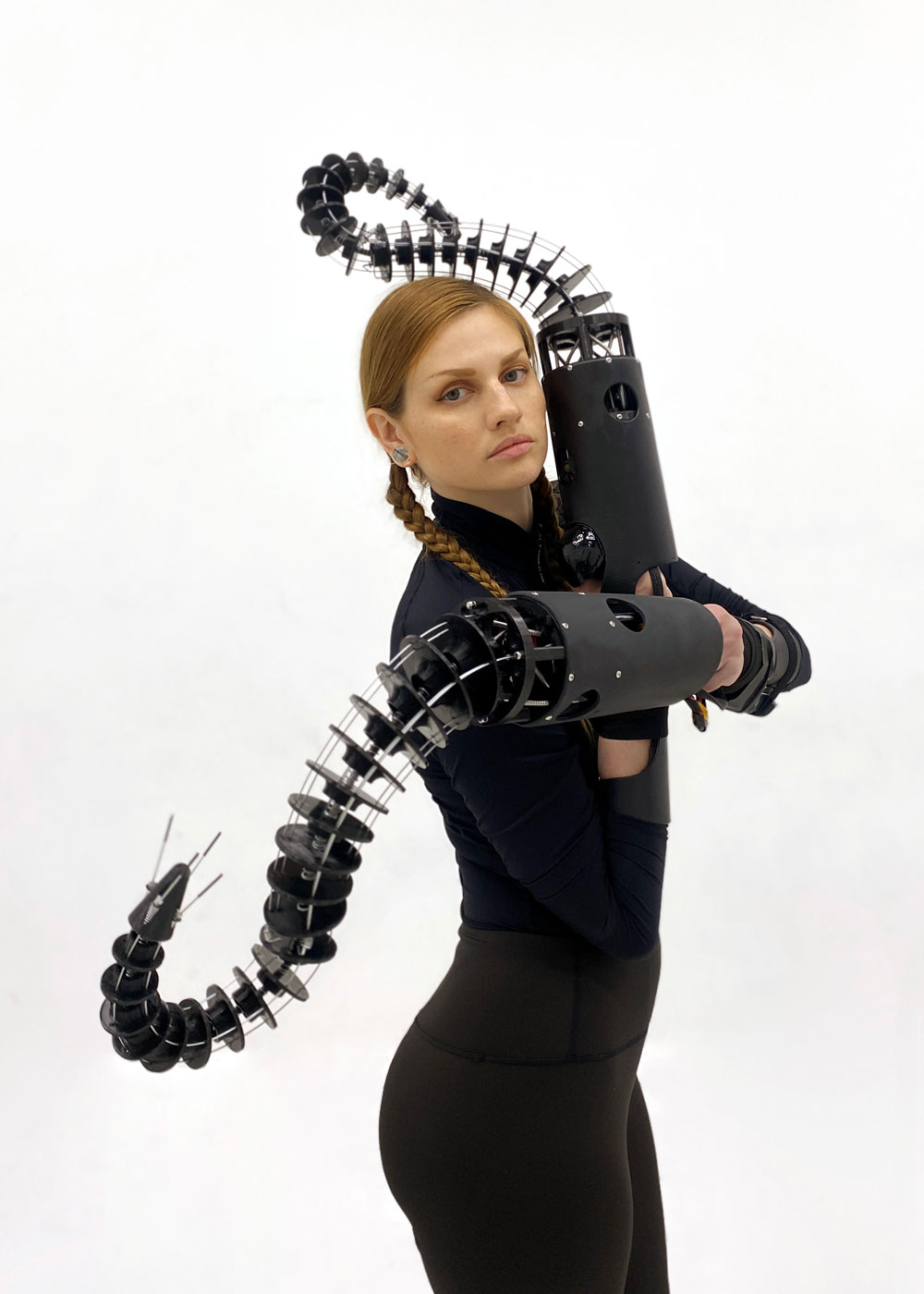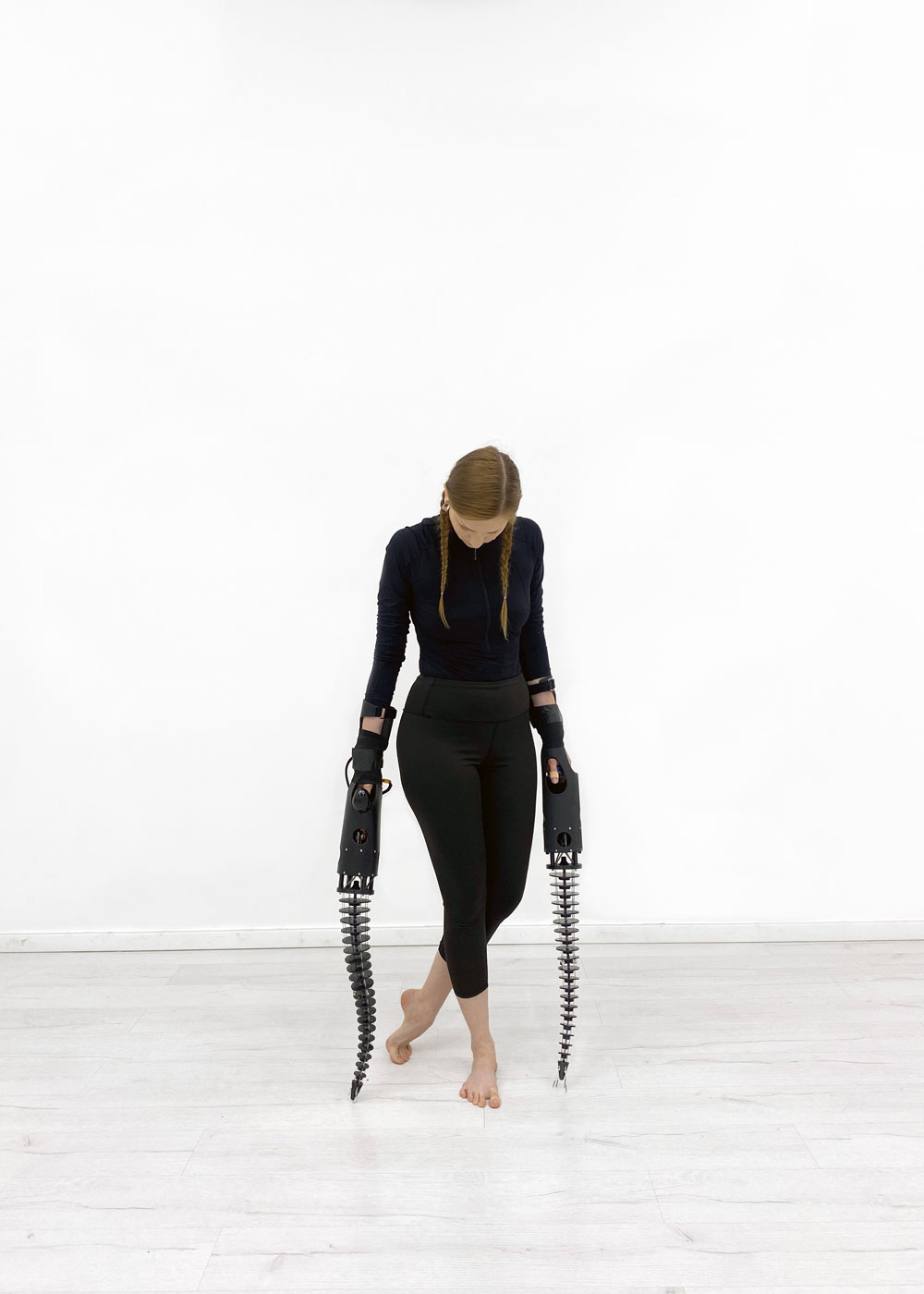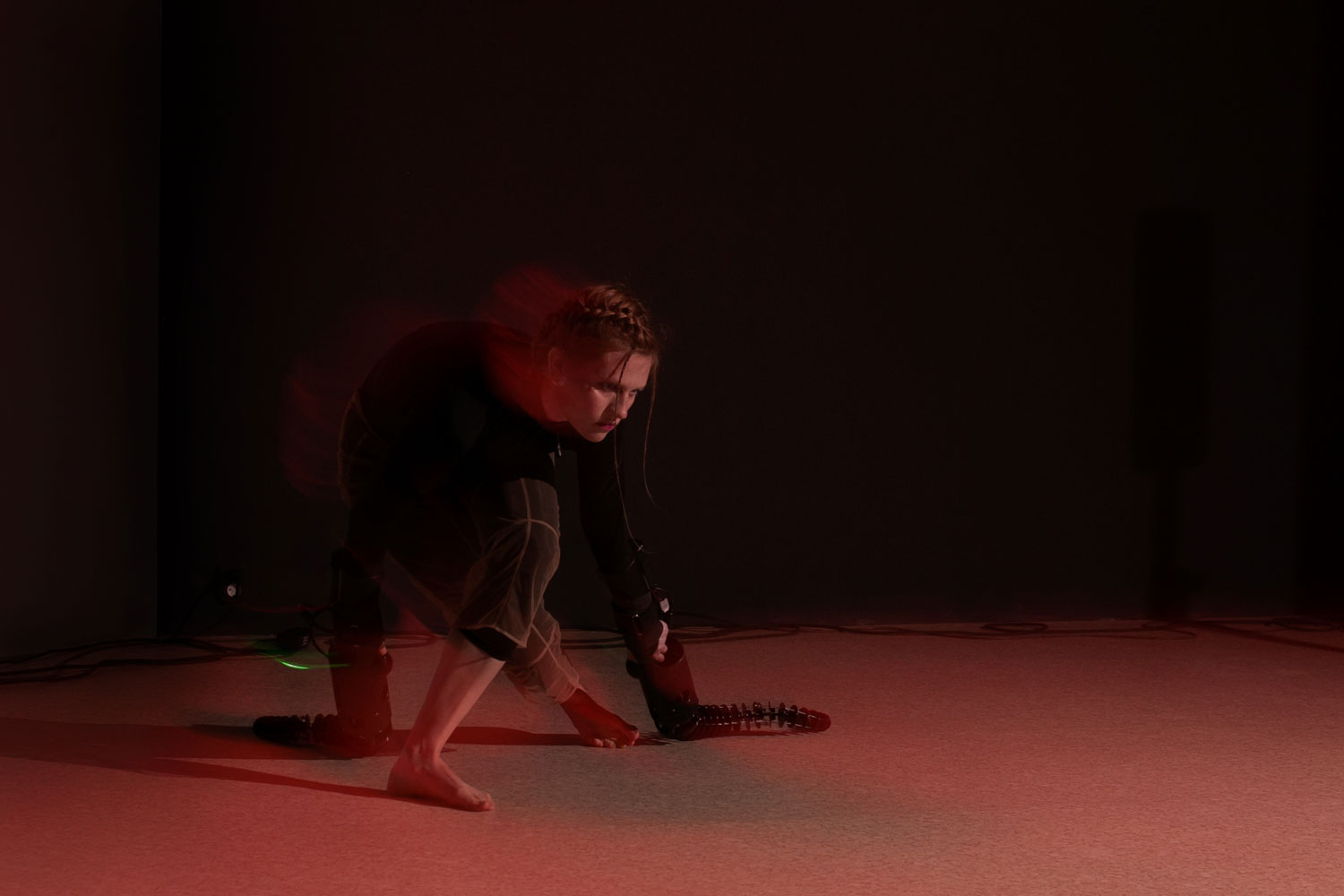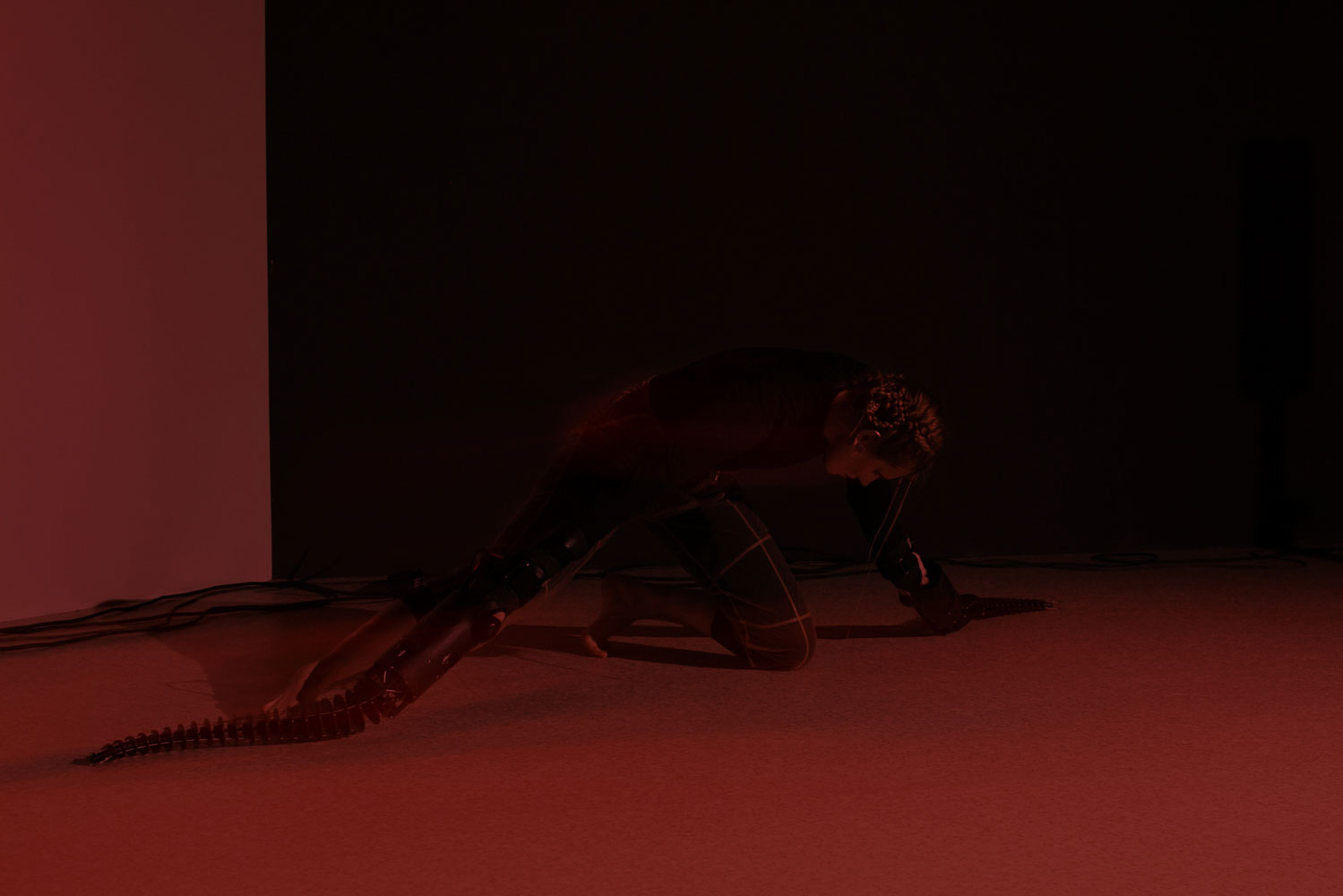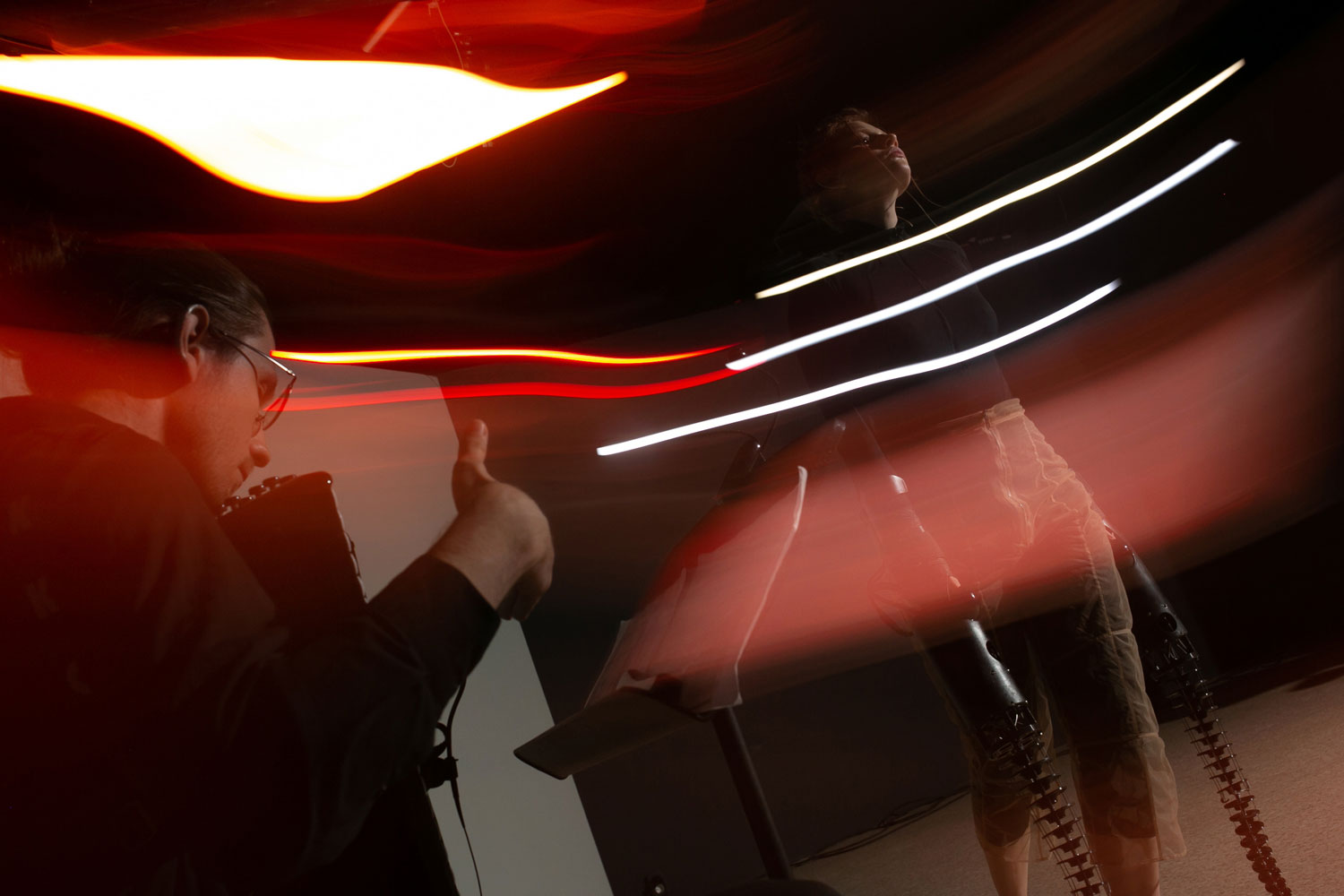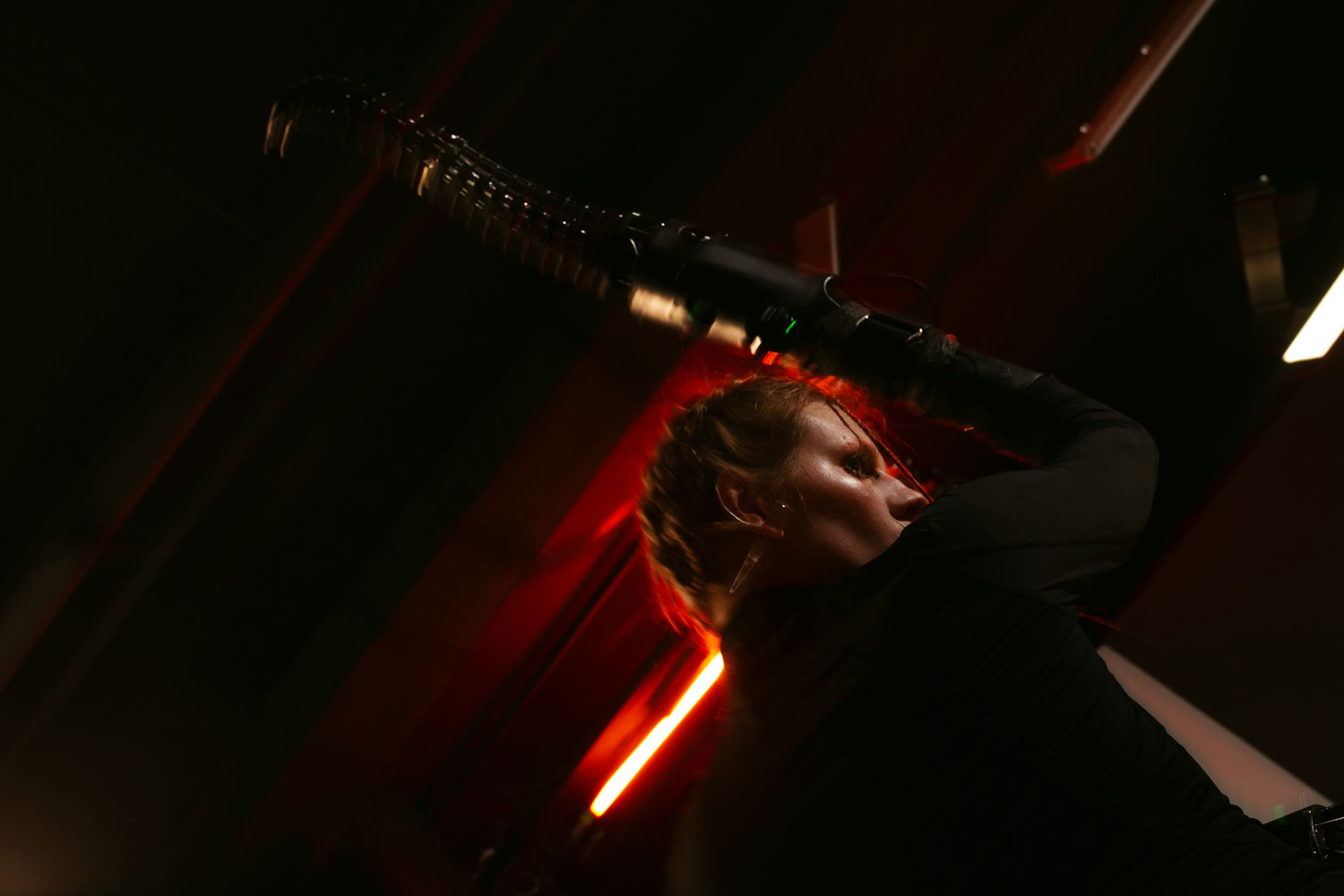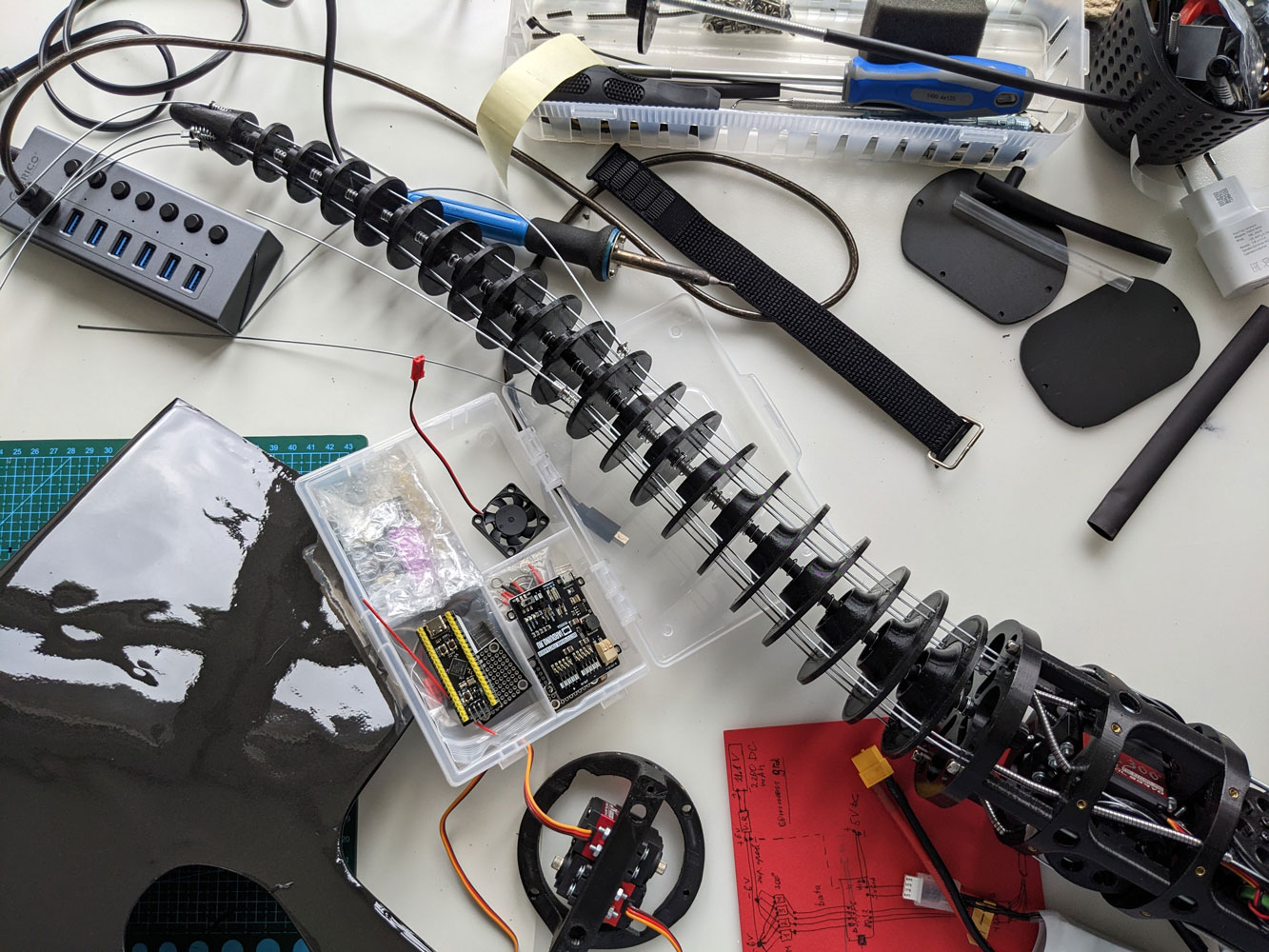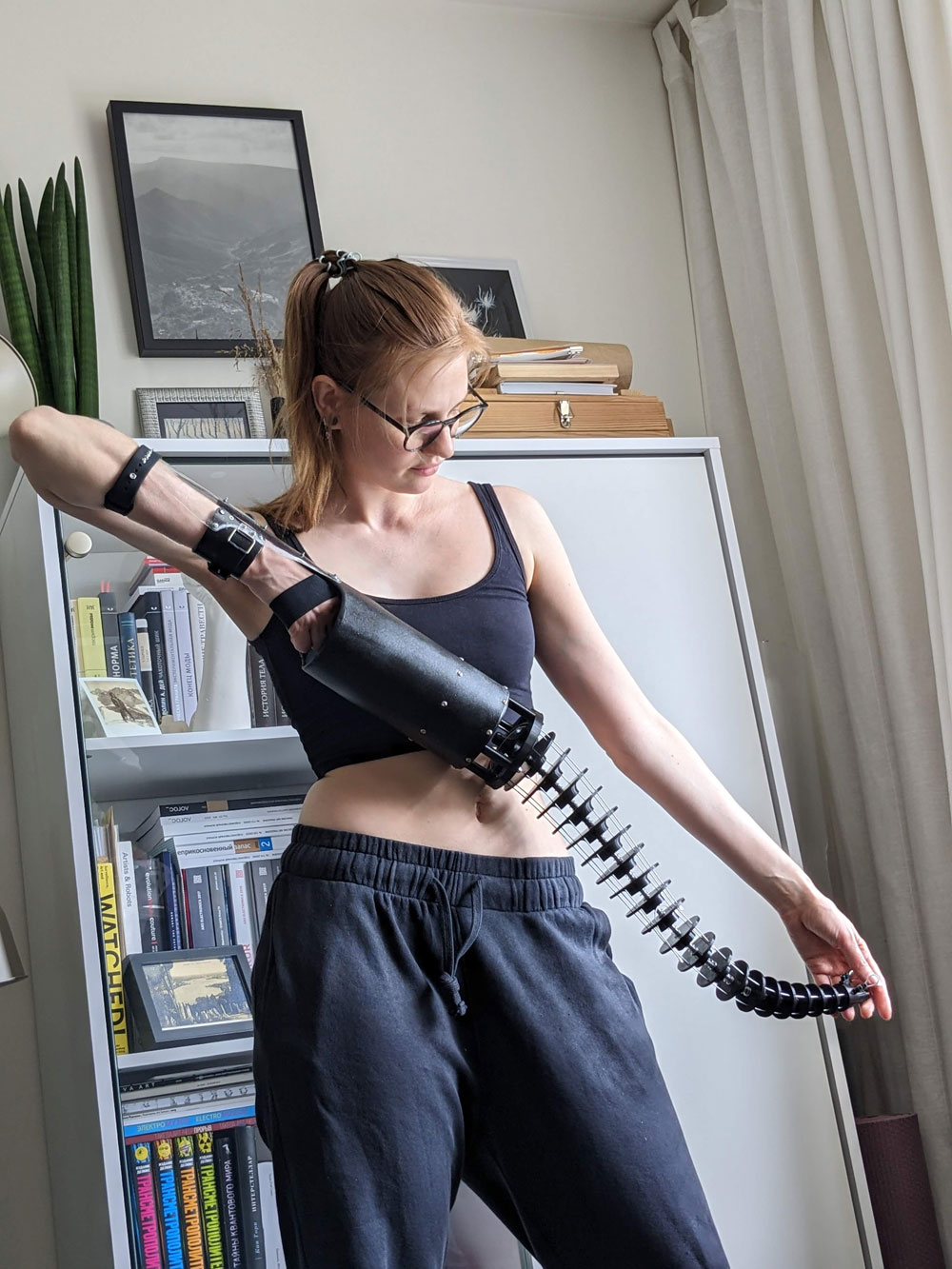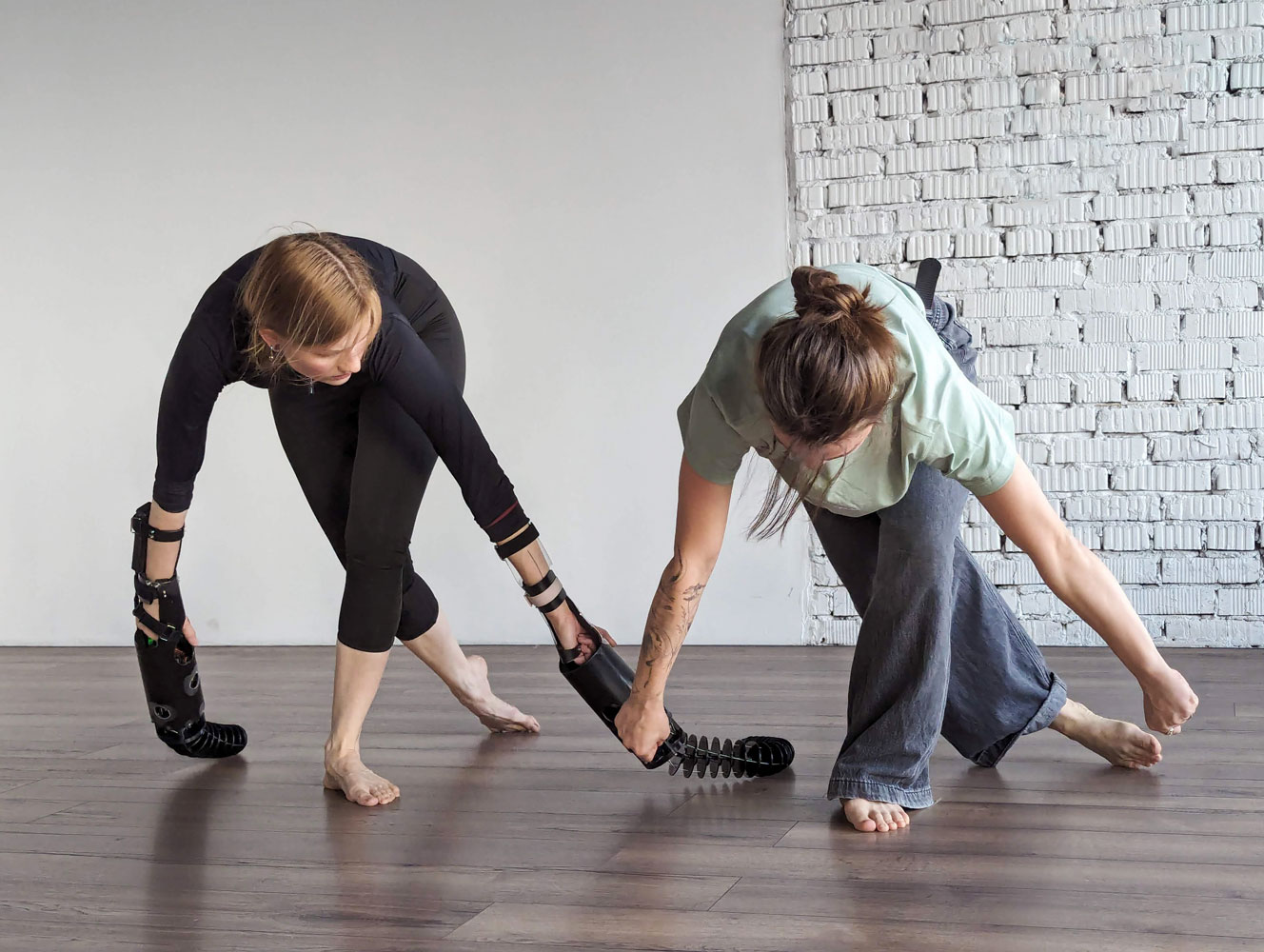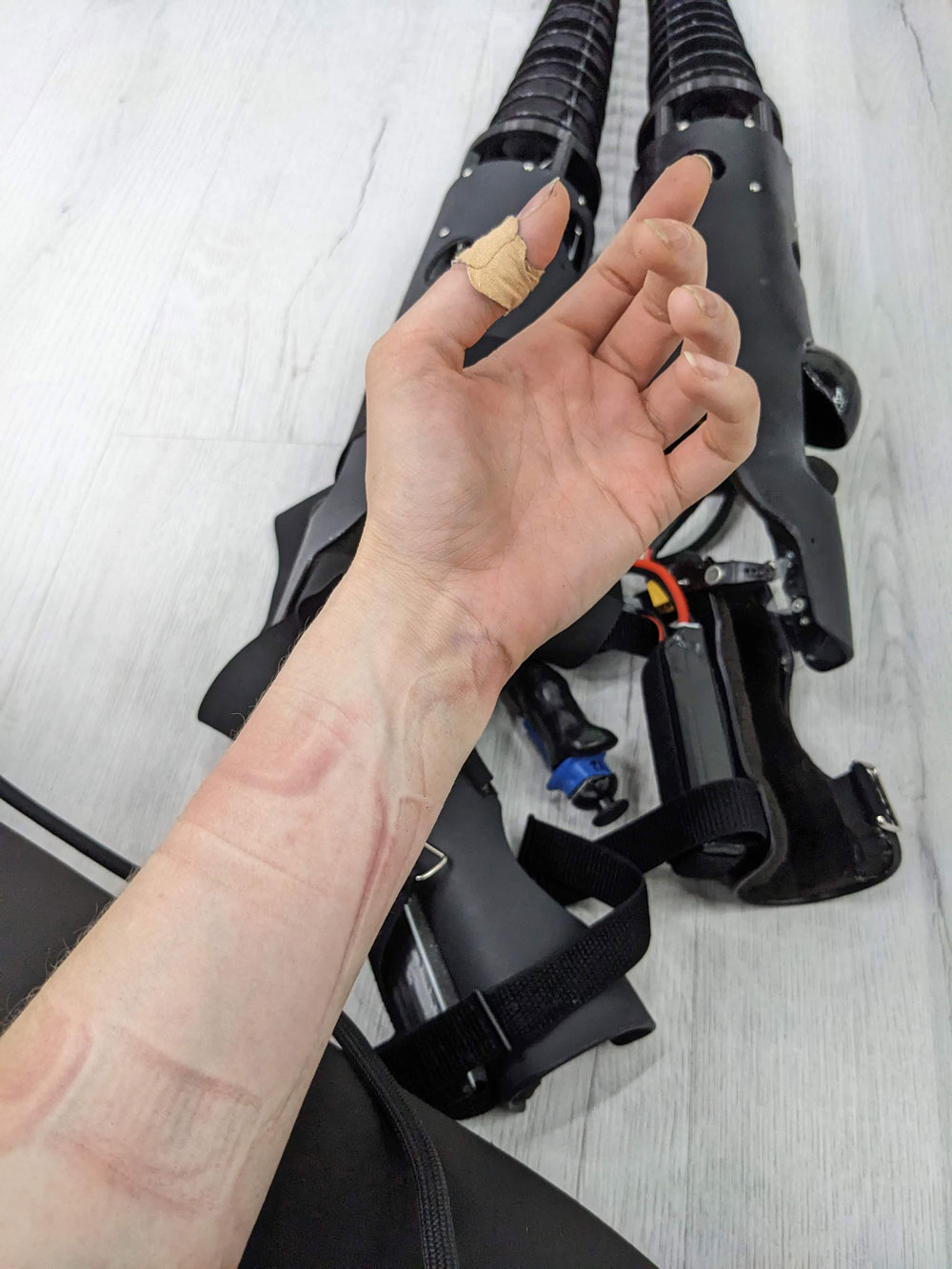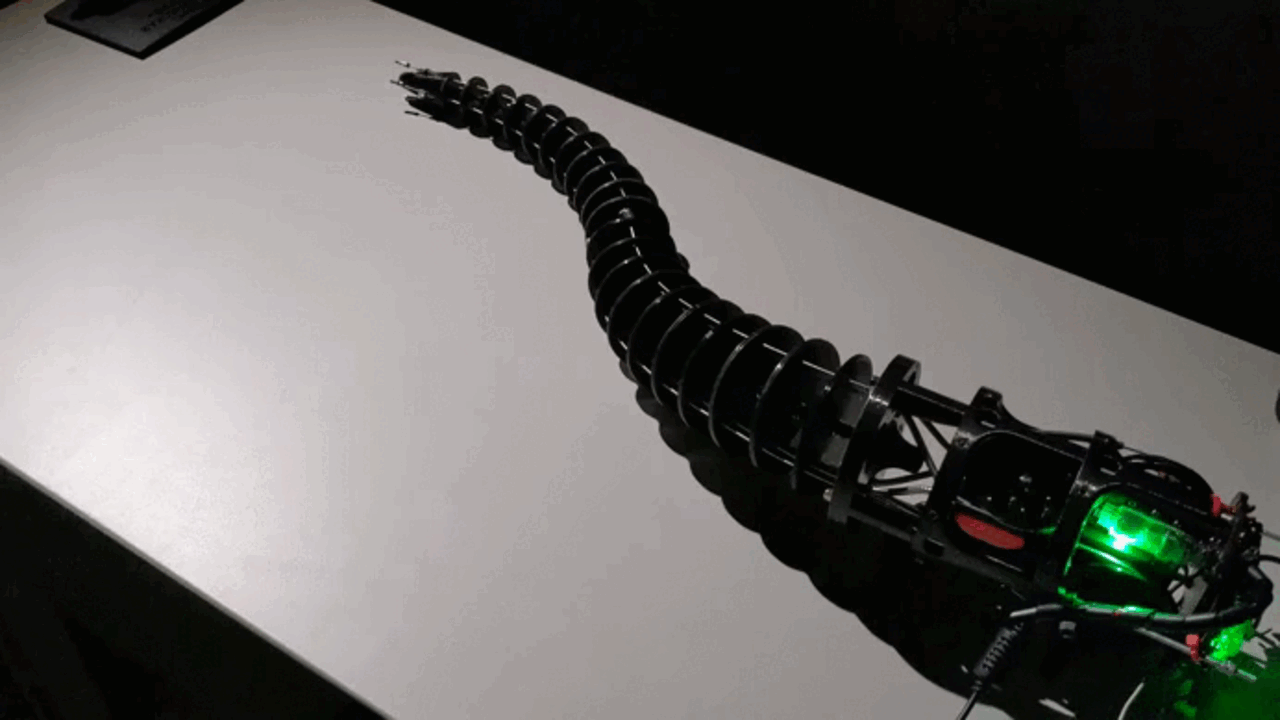The Synthetic Morphology project is an exploration of alternative body architecture. It involves the development and application of wearable robotic prostheses (tentacles) in performance, controlled through a specially designed interface. The authors of the project raise questions: How can art and technology help imagine alternative “natures,” “techniques,” and “bodies” that visually manifest the gray areas of normativity? How can such knowledge contribute to creating a more inclusive society where not only different “types” of people but also other species can coexist? The work also discusses the problem of binary oppositions underlying the construction of the “Western” worldview: “human/non-human,” “natural/cultural,” “natural/artificial,” “normal/pathological.” Such categories excessively arise where there is human thinking and a need for self-identification.
But what is a human being in general? There is no unconditional and universal concept of a human that could serve as an unchanging reference point. Any concept is a conditioned product of a specific society, discourse, and historical situation, and thus a subject and cause of disagreement. “Human” is an answer to the question of “how” to exist, not “who” exists. As finite beings, we are forced to answer this question again and again, as there is neither an innate nor a final answer. “Human” disappears and is reinvented; it is a constant metamorphosis: Where does the body end? Does its physical boundary coincide with its functional one? How permeable and transformable is the body’s boundary? What role do technology and pharmacology play in establishing and maintaining this boundary? Should the body be understood as an autonomous entity embedded in an environment or as a product of the environment? How should we perceive the fundamental heterogeneity of the body, which includes a multitude of other organisms? How do the natural and the artificial, the given and the changeable, relate within the body?
Performance: sound (Dmitry Mazurov, composer; Roman Malyavkin, accordion); choreography (Sonya Golomolzina, direction; Anastasia Alekhina, performance).
Technical partner: Kaspersky Lab.
Supported by the Norpexal Foundation + PERMM Museum.
Anastasia Alekhina (concept, design, electronics), Lev Losev (3D modeling, mechanics), Mikhail Tarbeev (engineering support, programming), Katya Molchanova (infographics).
Acknowledgments: Alexander Pisarev (assistance with theoretical sources), Dmitry Bulatov (curator), the “People of the Future” Charitable Foundation (organizing dialogue with the prosthetics community), Lyudmila Alyabyeva (support and organization of events dedicated to prosthetics in culture, art, and design).
Full text: Alekhina A.A., Pisarev A.A. Art&Science and Posthumanism: Technoscience, Aesthetics, and Corporeality // Nauka Televideniya. 2023. 19 (3). P.43–67. DOI: https://doi.org/10.30628/1994-9529-2023-19.3-43-67. EDN: ABXJZX
